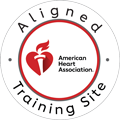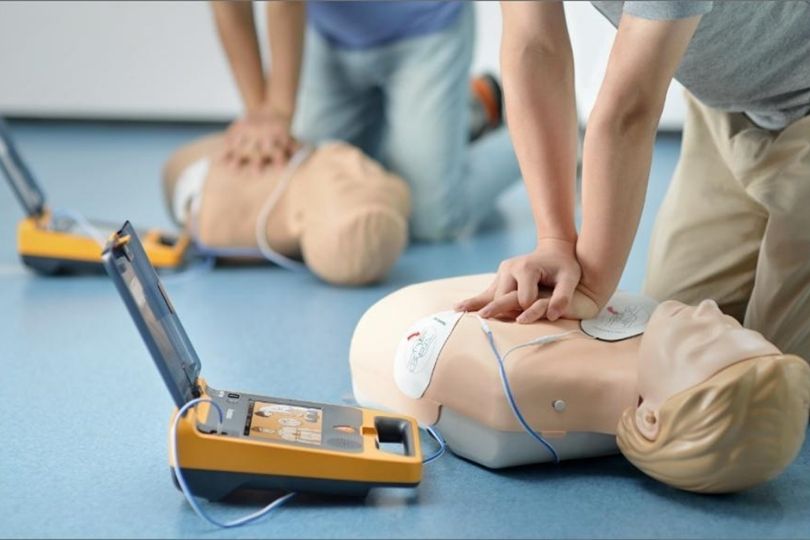In a cardiac emergency, every second counts. Sudden cardiac arrest (SCA) can strike without warning, and the chances of survival significantly decrease with each passing minute. One of the most effective tools in saving lives during these emergencies is an Automated External Defibrillator (AED). AEDs are designed to be used by anyone, regardless of medical experience, making it possible for bystanders to jump into action and provide lifesaving care before medical professionals arrive. In this article, we’ll walk you through the essential steps for using an AED successfully, ensuring you’re prepared in case of an emergency.
Understanding how to use an AED can make a world of difference. These devices are designed to analyze the heart’s rhythm and deliver a shock if needed, potentially restoring a normal heartbeat and saving a life. With proper training and knowledge, you can confidently use an AED and make a life-saving impact. Let’s dive into the role of AEDs and the steps to operate them effectively during a cardiac emergency.
Understanding AEDs
An Automated External Defibrillator (AED) is a portable, life-saving device used to treat people experiencing sudden cardiac arrest. It works by delivering a controlled electric shock, called defibrillation, to the heart to restore its normal rhythm. The device analyzes the heart’s rhythm, and if it detects a shockable rhythm, it will advise the user to deliver a shock. This intervention can be the difference between life and death, making AEDs invaluable in emergencies.
The key features of an AED include a set of adhesive pads that are placed on the chest to detect the heart’s rhythm, as well as built-in voice prompts and visual instructions to guide the user. AEDs are designed to be easy to use, even for someone with no medical background, and they are often found in public spaces such as schools, airports, and shopping malls.
AEDs are critical because early defibrillation dramatically increases the chances of survival for someone in sudden cardiac arrest. According to the American Heart Association (AHA), the survival rate for victims of SCA decreases by 7-10% for every minute that passes without defibrillation. The quicker you can intervene with an AED, the better the chances of restoring a normal heartbeat. Success stories abound where AEDs have saved lives by providing critical intervention until emergency medical services arrive.
Call Us Now
Get the Best CPR Class in Tampa Today!
Preparation Before Using an AED
Before using an AED, it’s important to ensure you’re in a safe environment. Assess the scene for any potential dangers, such as electrical hazards, fire, or traffic if you are outdoors. Only proceed if it is safe to do so. Once you’ve confirmed the scene is safe, check the victim’s responsiveness. Gently tap them and shout, asking if they are okay. If they are unresponsive, immediately check for breathing.
If the person isn’t breathing or is breathing abnormally, it’s essential to call for help. Dial 911 and let them know the situation. At the same time, ask someone nearby to retrieve the AED, as these devices are often located in accessible public areas. While waiting for the AED, initiate CPR by performing chest compressions. Start compressions immediately to maintain circulation and buy time for the AED to arrive.
Steps to Use an AED
Once the AED is brought to the scene, follow these steps to use it effectively:
- Turn On the AED: Most AEDs are equipped with an on/off button. Once turned on, the device will begin providing audio and visual instructions. These prompts will guide you through each step of the process, making it as simple as possible.
- Attach the Pads: The AED will come with two adhesive pads that need to be placed on the victim’s chest. For adults, place one pad on the upper right side of the chest, just below the collarbone, and the other on the lower left side, below the ribcage. For children, there are child-sized pads available, and placement should follow the same principles. Make sure the pads are firmly adhered to the chest and remove any clothing, jewelry, or obstacles that could interfere with the placement.
- Analyze the Rhythm: Once the pads are attached, the AED will begin analyzing the heart’s rhythm. No one must be touching the victim during this phase. The AED will provide prompts, such as “Analyzing,” and will only advise a shock if the heart’s rhythm requires it.
- Deliver the Shock: If the AED detects a shockable rhythm, it will prompt you to press a button to deliver the shock. Make sure no one is touching the victim during this process to avoid injury. Once the shock is delivered, the AED will instruct you to resume CPR immediately.
- Resume CPR: After the shock is delivered, continue chest compressions and follow the AED’s instructions. The AED will continue to monitor the heart’s rhythm, and if necessary, it will advise another shock. If the person starts breathing or becomes responsive, stop CPR and monitor them closely until help arrives.
Common Challenges and Tips
While using an AED is straightforward, there are a few challenges you might encounter. One of the most common obstacles is hesitation. Many people feel unsure about using an AED, fearing they might do something wrong. It’s important to remember that the AED is designed to be foolproof, and the voice prompts will guide you every step of the way. You won’t harm the person by using the device, and early intervention is crucial for survival.
Another issue to consider is the readiness of the AED. AEDs require regular maintenance, including checking the battery and ensuring the pads are not expired. Before each use, it’s important to perform a quick check to ensure the device is functional.
Situational awareness is also key. If the person is in a wet environment, such as near a pool, make sure to dry off their chest before applying the pads. Also, be aware of any implanted devices like pacemakers or defibrillators. These devices usually don’t interfere with AED use, but it’s important to avoid placing pads directly over the device.
The Importance of AED Training
While AEDs are easy to use, training can boost your confidence and competence in using them during an emergency. Hands-on practice helps you become familiar with the device, reducing hesitation in a real-life situation. CPR and AED courses often simulate real-life emergencies, so you can experience the process in a stress-free, controlled environment.
CPR Classes Tampa offers comprehensive AED and CPR training courses designed to ensure you’re fully prepared to handle cardiac emergencies. With hands-on practice, you’ll learn not only how to operate an AED but also how to perform effective CPR, increasing your chances of saving a life.
Conclusion
Using an AED during a cardiac emergency can significantly increase the victim’s chances of survival. By following the simple steps of turning on the device, attaching the pads, analyzing the rhythm, delivering the shock, and resuming CPR, you can help restore a normal heart rhythm and buy valuable time until medical help arrives. With AEDs being easy to use and widely available, they have become an essential tool in the fight against sudden cardiac arrest.
To be prepared for an emergency, enroll in CPR Classes Tampa’s AED and CPR courses today. With our stress-free, hands-on training, you’ll gain the confidence and skills needed to use an AED successfully and help save lives. It’s the best CPR in Tampa, and you never know when your life-saving skills will be called into action!



